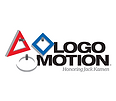top of page
2025
Reefscape
Awards
Systems
2019

DESTINATION: DEEP SPACE
Awards
Systems
ISR District #1: Rank 4, Winner, Innovation in Control Award
ISR District #3: Rank 10, Industrial Design Award
Israel District Championship: Rank 10, Finalist, Dean's List Finalist Award (Gilad Segev), Excellence in Engineering Award
Daly Division: Rank 30, Innovation in Control Award
-
Drivetrain
-
Two-sided Arm
-
Ball Collector
-
Panel Collector
-
Climb Actuators



_svg.png)


2017

FIRST Steamworks
Awards
Systems
ISR District #1: Rank 1, Winner, Industrial Design Award
ISR District #3: Rank 1, Winner, Chairman's Award
Israel District Championship: Rank 2, Finalist, Excellence in Engineering Award
Roebling Division: Rank 4, Quarterfinalist, Excellence in Engineering Award
-
Drivetrain
-
Climbing
-
Gear Managing
-
Fuel Collecting
-
Shooting



_svg.png)


bottom of page





_svg.png)





_svg.png)






_svg.png)






_svg.png)




_svg.png)






_svg.png)






_svg.jpg)





_svg.png)






_svg.jpg)






_svg.jpg)





_svg.png)






_svg.png)





_svg.jpg)






_svg.jpg)





_svg.png)



